Quality matters at any size brewery, and the team behind beer quality is what matters most since data doesn’t analyze itself.
The post The People Behind Beer Quality appeared first on CraftBeer.com.
Quality matters at any size brewery, and the team behind beer quality is what matters most since data doesn’t analyze itself.
The post The People Behind Beer Quality appeared first on CraftBeer.com.
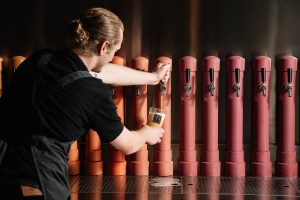
The brewery's new East Brunswick venue delivers a new direction from their Victorian High Country roots.
The post Bridge Road Brewers’ Melbourne venue opens appeared first on Beer & Brewer.
 Ken Schramm joins me this week to discuss which fruits work best in meads. Subscribe on iTunes to Audio version or Video version or Spotify or Google Play Download the MP3 File– Right Click and Save As to download this mp3 file. Your browser does not support the audio element. Topics in This Week’s Episode […]
Ken Schramm joins me this week to discuss which fruits work best in meads. Subscribe on iTunes to Audio version or Video version or Spotify or Google Play Download the MP3 File– Right Click and Save As to download this mp3 file. Your browser does not support the audio element. Topics in This Week’s Episode […] 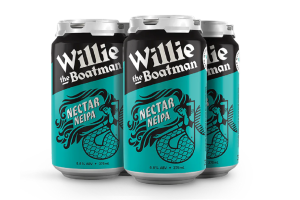
The Sydney brewery's refreshed approach includes new designs, name changes and recipe tweaks.
The post Willie the Boatman updates core range beers appeared first on Beer & Brewer.
 Dr Greg Casey joins me this week to discuss the interesting history of German Adjunct Lager and how it influenced the rise of American Adjunct Lager here in the US. Subscribe on iTunes to Audio version or Video version or Spotify or Google Play Download the MP3 File– Right Click and Save As to download […]
Dr Greg Casey joins me this week to discuss the interesting history of German Adjunct Lager and how it influenced the rise of American Adjunct Lager here in the US. Subscribe on iTunes to Audio version or Video version or Spotify or Google Play Download the MP3 File– Right Click and Save As to download […] 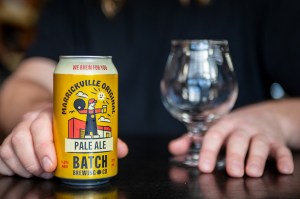
The Marrickville brewery's new look includes new names and recipes for some of their core range beers.
The post Batch unveil rebrand ahead of tenth birthday appeared first on Beer & Brewer.
(CLEVELAND,OH) – Great Lakes® Brewing Co. (GLBC) announces the release of new seasonal Cran Orange Wheat, a fruited wheat ale launching September in 6-Packs and Draft throughout all GLBC markets. […]
The post Great Lakes Brewing Announces New Cran Orange Wheat appeared first on The Full Pint - Craft Beer News.
(CHICAGO, IL) – Chicago is one of America’s great sports cities, boasting at least one franchise in each of the major sports and legends from Walter Payton and Michael Jordan […]
The post Revolution Brewing – Anti-Hero IPA Gets a Sporty New Look appeared first on The Full Pint - Craft Beer News.
Pairing produce with beer — with delicious results. A look at the glorious interplay between farmers market fare and craft beer.
The post A Great Beer for Greens appeared first on CraftBeer.com.
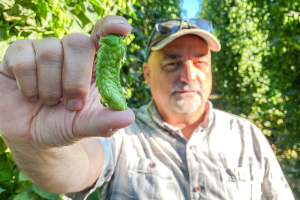
Elani boasts notes of pineapple, guava and white peach plus citrus aromas of tangerine, lime and orange zest.
The post Yakima Quality Hops’ new proprietary variety appeared first on Beer & Brewer.
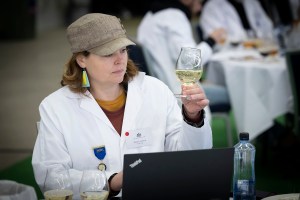
We chat with new chair of judges Briony Liebich ahead of the Cider Australia competition in October.
The post Strong panel set for Cider Awards judging appeared first on Beer & Brewer.
 This week Skip Schwartz, the head brewer at WeldWerks brewing joins me to discuss brewing barrel aged stouts. Subscribe on iTunes to Audio version or Video version or Spotify or Google Play Download the MP3 File– Right Click and Save As to download this mp3 file. Your browser does not support the audio element. Topics […]
This week Skip Schwartz, the head brewer at WeldWerks brewing joins me to discuss brewing barrel aged stouts. Subscribe on iTunes to Audio version or Video version or Spotify or Google Play Download the MP3 File– Right Click and Save As to download this mp3 file. Your browser does not support the audio element. Topics […]  This week I welcome Mirella Amato to discuss how you can best pair beer and foods for a great dining experience! Subscribe on iTunes to Audio version or Video version or Spotify or Google Play Download the MP3 File– Right Click and Save As to download this mp3 file. Your browser does not support the […]
This week I welcome Mirella Amato to discuss how you can best pair beer and foods for a great dining experience! Subscribe on iTunes to Audio version or Video version or Spotify or Google Play Download the MP3 File– Right Click and Save As to download this mp3 file. Your browser does not support the […] 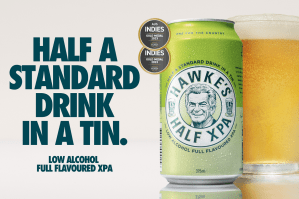
Also, Frenchies' birthday beer, Reckless' new sour, a WA classic returns and James Squire add a low carb pale ale.
The post Hawke’s add 1.75% XPA to core range appeared first on Beer & Brewer.
(Paso Robles, CA) – From the minds behind Mind Haze comes the psychedelic new 2023 edition of the “Mind Haze Tropical Hazy Mixed Pack,” which includes the all-new Mind Haze […]
The post Firestone Walker Introduces Mind Haze Tropic Rocket IPA to Annual Mixed Pack appeared first on The Full Pint - Craft Beer News.
Any beer can be a camping beer, of course, but here are some suggestions for cooling down after a hike or warming up around the firepit.
The post The Great Outdoors: Beers to Enjoy while Camping appeared first on CraftBeer.com.
(New Glarus, WI) – Today the New Glarus Brewing Company announced the release of Enigma. New Glarus Brewing Company’s Enigma makes its return to the thumbprint series. Enigma is a […]
The post New Glarus Announces The 2023 Release of Enigma appeared first on The Full Pint - Craft Beer News.
(LOS ANGELES, CA) August 13, 2023 – The Landing, a new craft bottle shop, is celebrating its grand opening on August 19-20. The Landing is a new curated retail experience […]
The post Grand Opening for The Landing by Eagle Rock Brewery August 19-20 appeared first on The Full Pint - Craft Beer News.
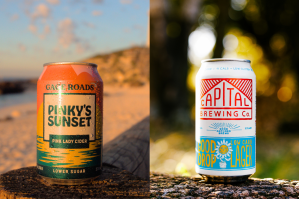
Meanwhile, Tooheys have brought back the 6.5% Extra Dry Platinum and Coopers' new lager officially launches.
The post Gage and Capital add “better for you” drinks appeared first on Beer & Brewer.

He takes up the role after being appointed the hop co-op's GM of sales and marketing less than a year ago.
The post NZ Hops announce Blair Stewart as new CEO appeared first on Beer & Brewer.

Now in its sixth edition, find out who Joe White Maltings has selected as its Signature Malt for this year.
The post The finest sustainable barley revealed for 2023 appeared first on Beer & Brewer.
 This week I welcome Larry Horwitz, the head brewer from Crooked Hammock to discuss Wit Beer and Light Lager brewing. Subscribe on iTunes to Audio version or Video version or Spotify or Google Play Download the MP3 File– Right Click and Save As to download this mp3 file. Your browser does not support the audio […]
This week I welcome Larry Horwitz, the head brewer from Crooked Hammock to discuss Wit Beer and Light Lager brewing. Subscribe on iTunes to Audio version or Video version or Spotify or Google Play Download the MP3 File– Right Click and Save As to download this mp3 file. Your browser does not support the audio […] 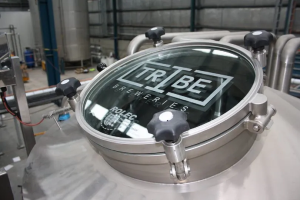
Brewery says partner brewing will continue to be its "driving force" as it emerges from voluntary administration.
The post Tribe declare ‘fresh start’ under new ownership appeared first on Beer & Brewer.
Hops once destined for beer have found a new prominence in hard seltzers, kombucha, and cocktails.
The post New Hope For Hops appeared first on CraftBeer.com.
 This week I welcome back John Palmer to discuss English and American Pale Ales and IPAs and how water shapes the flavor of these beers. Subscribe on iTunes to Audio version or Video version or Spotify or Google Play Download the MP3 File– Right Click and Save As to download this mp3 file. Your browser […]
This week I welcome back John Palmer to discuss English and American Pale Ales and IPAs and how water shapes the flavor of these beers. Subscribe on iTunes to Audio version or Video version or Spotify or Google Play Download the MP3 File– Right Click and Save As to download this mp3 file. Your browser […] (Hillsboro, OR) – Backwoods Brewing announces new satellite pub in downtown Hillsboro. The pub will be the anchor tenant in the Main Street Commons development – a revitalization of a […]
The post Backwoods Brewing Set to Open New Satellite Pub in Hillsboro appeared first on The Full Pint - Craft Beer News.
(DENVER, CO)—Our Mutual Friend Brewing Company (OMF) announces their July beer lineup which includes a new West Coast IPA, the next edition from OMF’s experimental IPA series Wave Motion, a returning […]
The post Our Mutual Friend Brewing Drops July 2023 Beer Lineup appeared first on The Full Pint - Craft Beer News.
(GREELEY, CO)— WeldWerks Brewing Co. is sharing their next round of limited release beers—Strawberry Cheesecake and Vacay Everyday—which are available at the WeldWerks taproom on Friday, June 30. The beers will […]
The post WeldWerks Brewing Unveils Next Round of New Beers for Summer 2023 appeared first on The Full Pint - Craft Beer News.
Back Home Beer brings to life Iranian and Middle Eastern ingredients and flavors, and celebrates the communal joy of brewing and bonding with one another over beer.
The post Transporting Beer Drinkers ‘Back Home’ with Middle Eastern Flair appeared first on CraftBeer.com.
 This week I welcome back Stan Hieronymus to discuss New Zealand hops, new hop varieties and their application in India Pale Ales. Subscribe on iTunes to Audio version or Video version or Spotify or Google Play Download the MP3 File– Right Click and Save As to download this mp3 file. Your browser does not support […]
This week I welcome back Stan Hieronymus to discuss New Zealand hops, new hop varieties and their application in India Pale Ales. Subscribe on iTunes to Audio version or Video version or Spotify or Google Play Download the MP3 File– Right Click and Save As to download this mp3 file. Your browser does not support […]